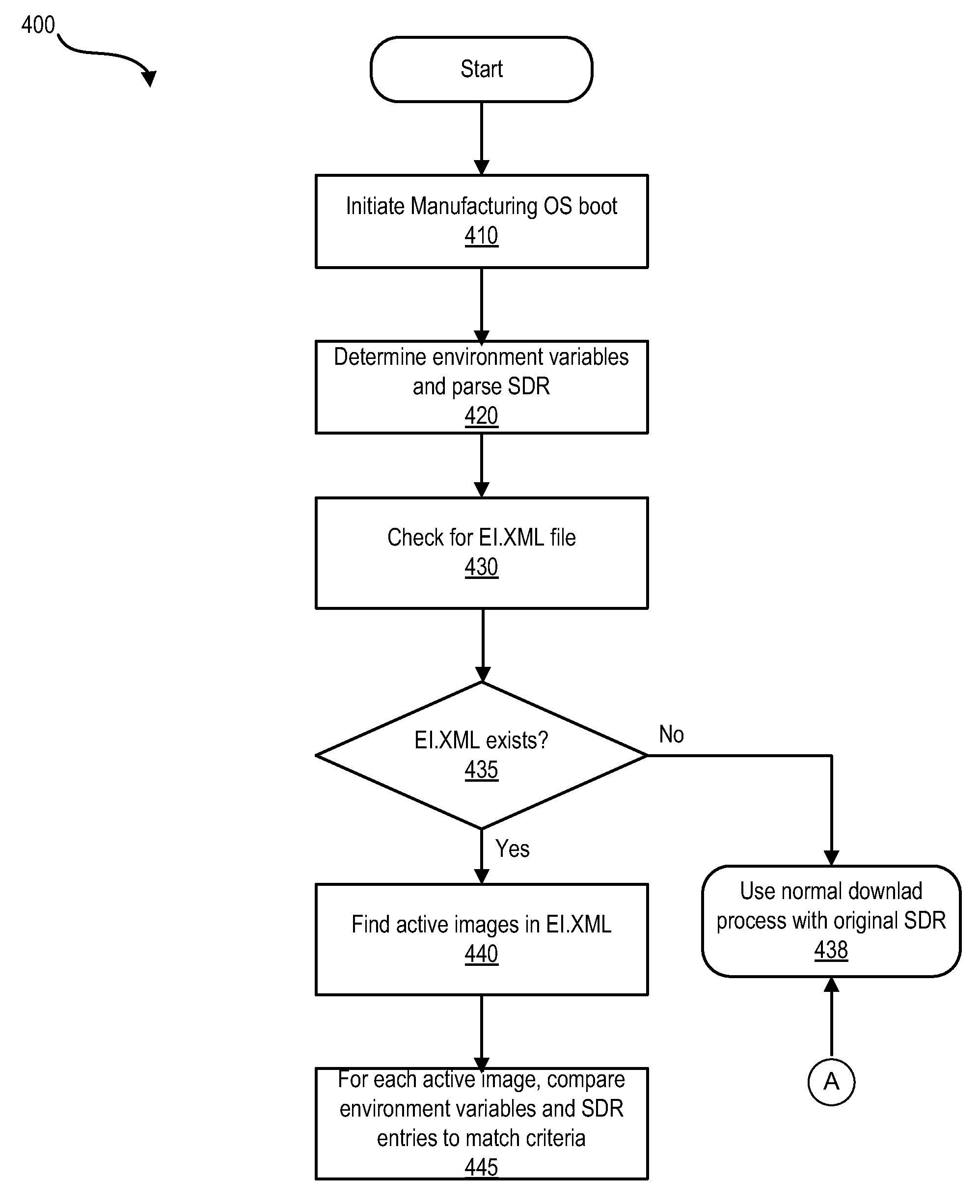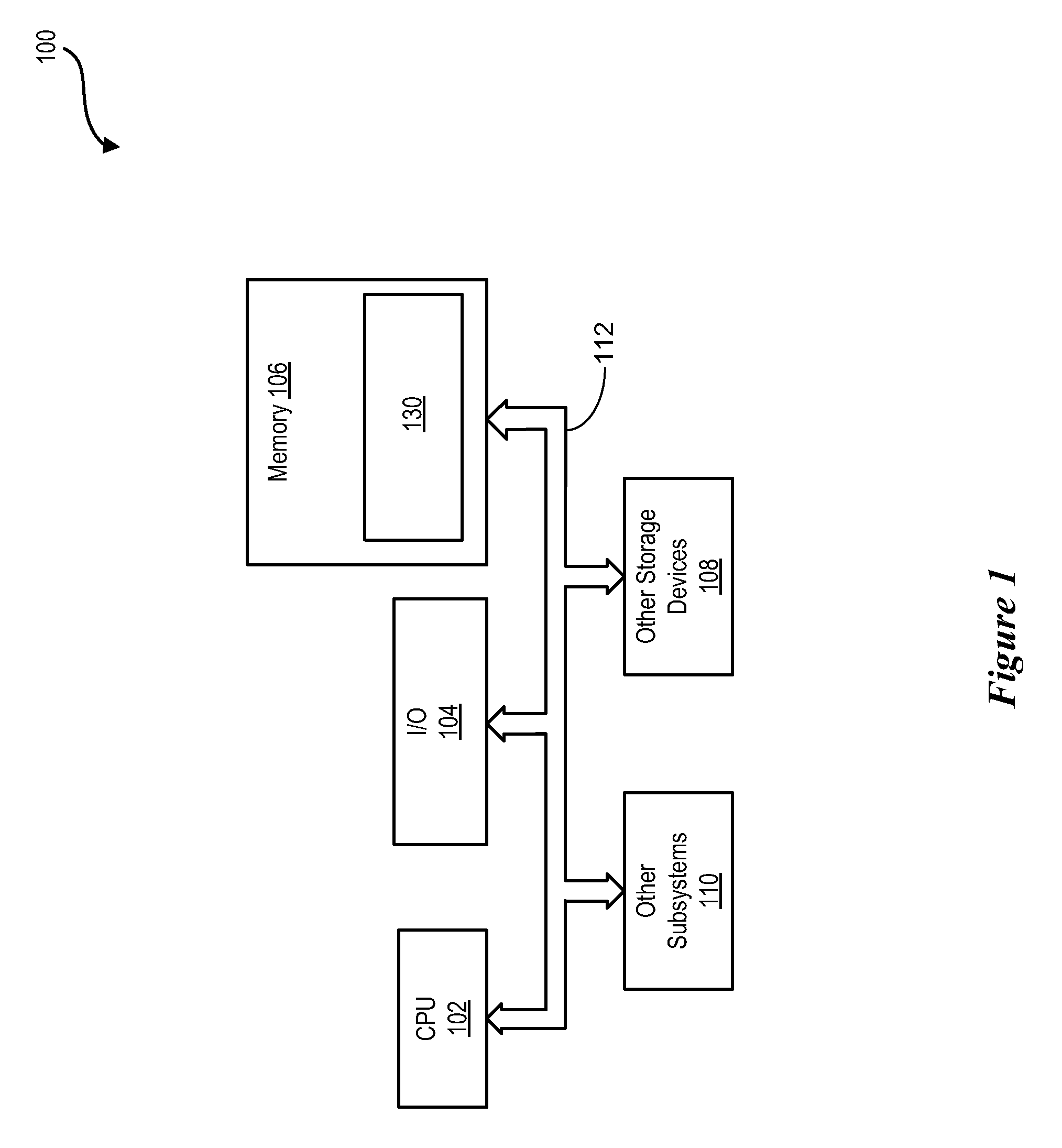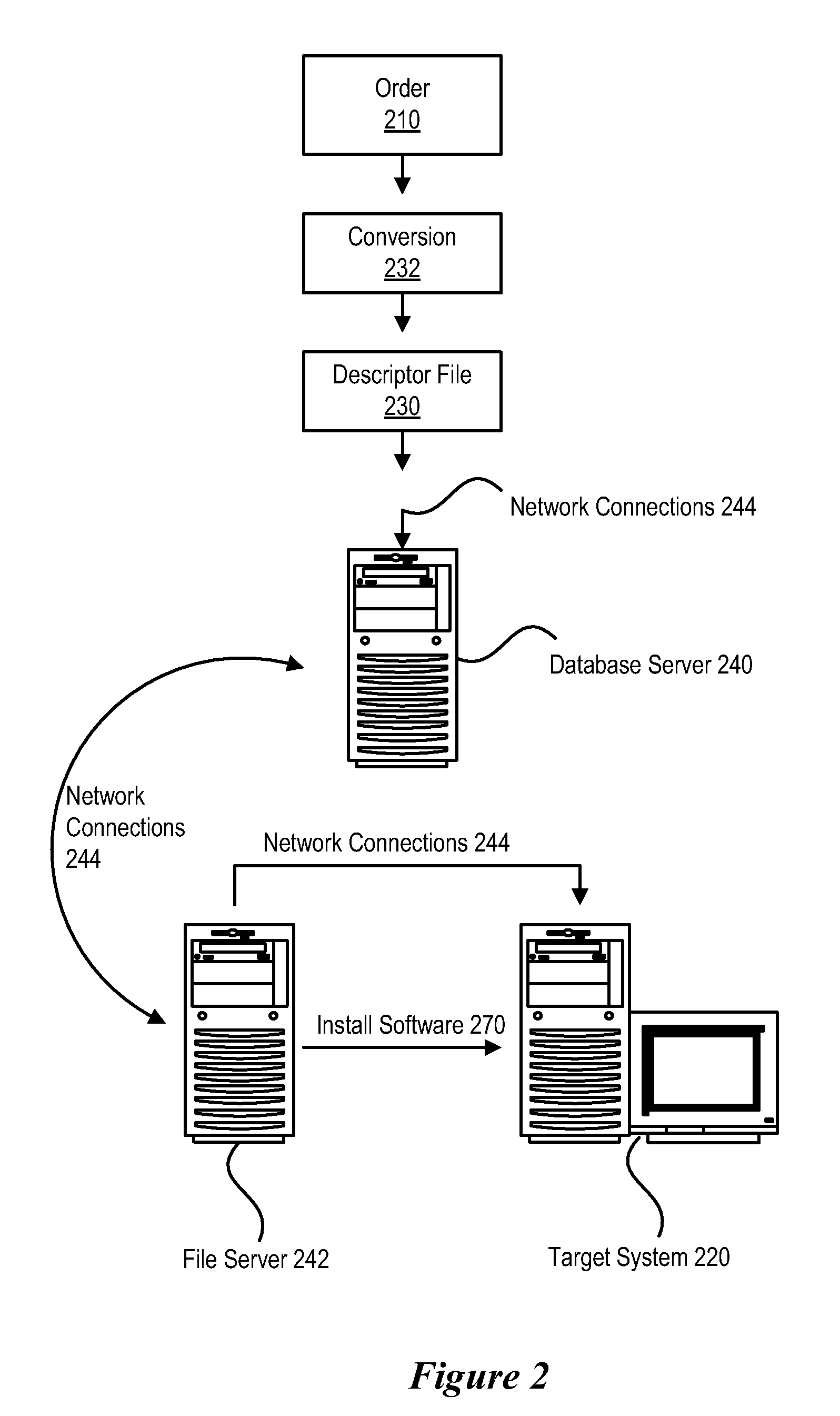Replacement of Build to Order Parts with Post Configured Images in any Manufacturing Environment
a technology of build to order and manufacturing environment, applied in the field of information handling systems, can solve the problems of limiting the ability of manufacture, increasing the cost of outside development manufacturers, and consuming a lot of time, and achieves the effect of reducing the need for costly it infrastructure and greater time savings
- Summary
- Abstract
- Description
- Claims
- Application Information
AI Technical Summary
Benefits of technology
Problems solved by technology
Method used
Image
Examples
Embodiment Construction
[0017]Referring briefly to FIG. 1, a system block diagram of an information handling system 100 is shown. The information handling system 100 includes a processor 102, input / output (I / O) devices 104, such as a display, a keyboard, a mouse, and associated controllers (each of which may be coupled remotely to the information handling system 100), a memory 106 including volatile memory such as random access memory (RAM) and non-volatile memory such as a hard disk and drive, and other storage devices 108, such as an optical disk and drive and other memory devices, and various other subsystems 110, all interconnected via one or more buses 112.
[0018]For purposes of this disclosure, an information handling system may include any instrumentality or aggregate of instrumentalities operable to compute, classify, process, transmit, receive, retrieve, originate, switch, store, display, manifest, detect, record, reproduce, handle, or utilize any form of information, intelligence, or data for busi...
PUM
 Login to View More
Login to View More Abstract
Description
Claims
Application Information
 Login to View More
Login to View More - R&D
- Intellectual Property
- Life Sciences
- Materials
- Tech Scout
- Unparalleled Data Quality
- Higher Quality Content
- 60% Fewer Hallucinations
Browse by: Latest US Patents, China's latest patents, Technical Efficacy Thesaurus, Application Domain, Technology Topic, Popular Technical Reports.
© 2025 PatSnap. All rights reserved.Legal|Privacy policy|Modern Slavery Act Transparency Statement|Sitemap|About US| Contact US: help@patsnap.com



